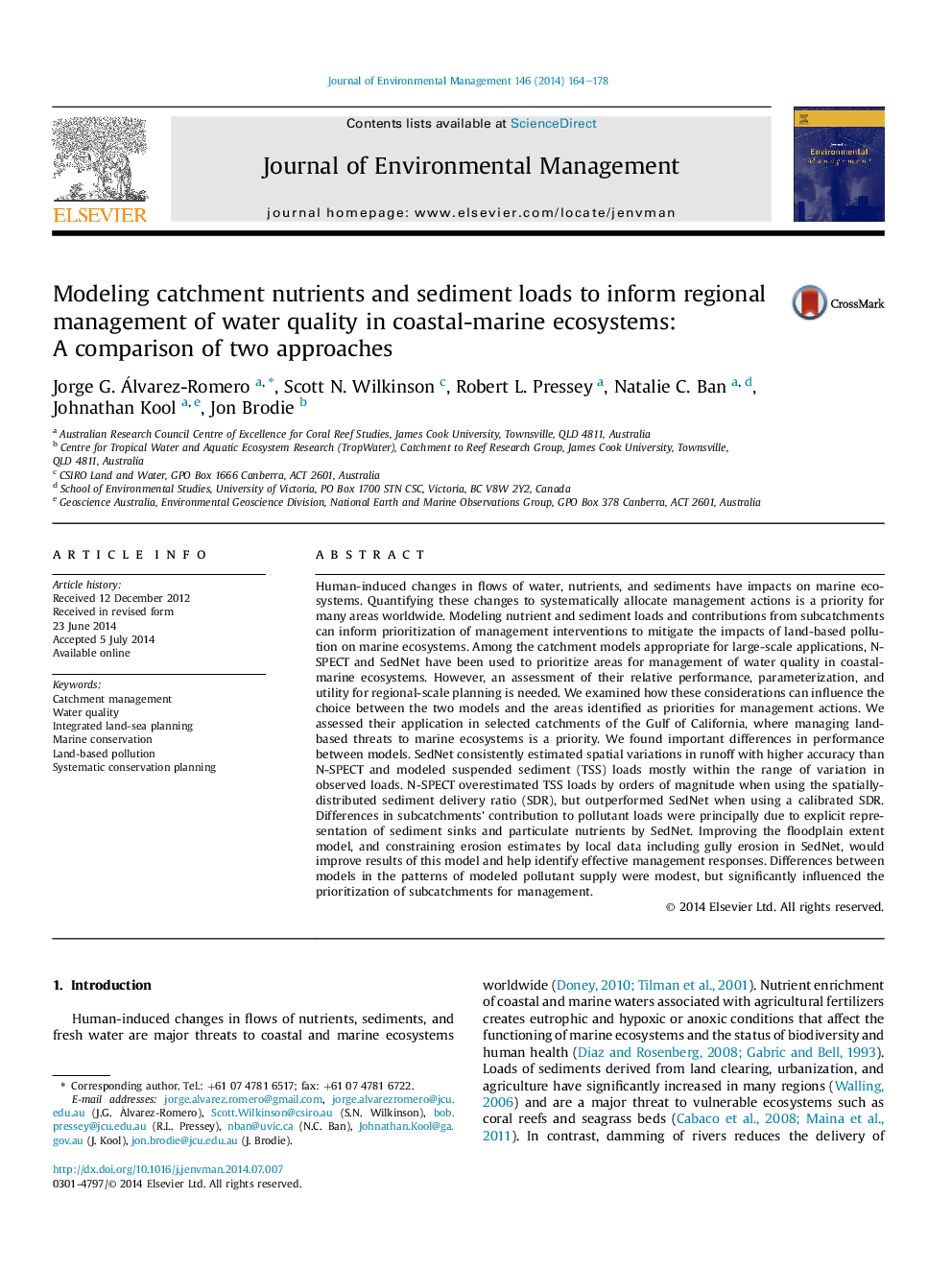| کد مقاله | کد نشریه | سال انتشار | مقاله انگلیسی | نسخه تمام متن |
|---|---|---|---|---|
| 7483371 | 1485266 | 2014 | 15 صفحه PDF | دانلود رایگان |
عنوان انگلیسی مقاله ISI
Modeling catchment nutrients and sediment loads to inform regional management of water quality in coastal-marine ecosystems: A comparison of two approaches
ترجمه فارسی عنوان
مدل سازی مواد مغذی و بارهای رسوب برای مدیریت منطقه ای کیفیت آب در اکوسیستم های ساحلی دریایی: مقایسه دو روش
دانلود مقاله + سفارش ترجمه
دانلود مقاله ISI انگلیسی
رایگان برای ایرانیان
کلمات کلیدی
مدیریت زباله، کیفیت آب، برنامه ریزی یکپارچه زمین و دریا، حفاظت دریایی، آلودگی زمینی، برنامه ریزی حفاظت منظم،
موضوعات مرتبط
مهندسی و علوم پایه
مهندسی انرژی
انرژی های تجدید پذیر، توسعه پایدار و محیط زیست
چکیده انگلیسی
Human-induced changes in flows of water, nutrients, and sediments have impacts on marine ecosystems. Quantifying these changes to systematically allocate management actions is a priority for many areas worldwide. Modeling nutrient and sediment loads and contributions from subcatchments can inform prioritization of management interventions to mitigate the impacts of land-based pollution on marine ecosystems. Among the catchment models appropriate for large-scale applications, N-SPECT and SedNet have been used to prioritize areas for management of water quality in coastal-marine ecosystems. However, an assessment of their relative performance, parameterization, and utility for regional-scale planning is needed. We examined how these considerations can influence the choice between the two models and the areas identified as priorities for management actions. We assessed their application in selected catchments of the Gulf of California, where managing land-based threats to marine ecosystems is a priority. We found important differences in performance between models. SedNet consistently estimated spatial variations in runoff with higher accuracy than N-SPECT and modeled suspended sediment (TSS) loads mostly within the range of variation in observed loads. N-SPECT overestimated TSS loads by orders of magnitude when using the spatially-distributed sediment delivery ratio (SDR), but outperformed SedNet when using a calibrated SDR. Differences in subcatchments' contribution to pollutant loads were principally due to explicit representation of sediment sinks and particulate nutrients by SedNet. Improving the floodplain extent model, and constraining erosion estimates by local data including gully erosion in SedNet, would improve results of this model and help identify effective management responses. Differences between models in the patterns of modeled pollutant supply were modest, but significantly influenced the prioritization of subcatchments for management.
ناشر
Database: Elsevier - ScienceDirect (ساینس دایرکت)
Journal: Journal of Environmental Management - Volume 146, 15 December 2014, Pages 164-178
Journal: Journal of Environmental Management - Volume 146, 15 December 2014, Pages 164-178
نویسندگان
Jorge G. Álvarez-Romero, Scott N. Wilkinson, Robert L. Pressey, Natalie C. Ban, Johnathan Kool, Jon Brodie,
